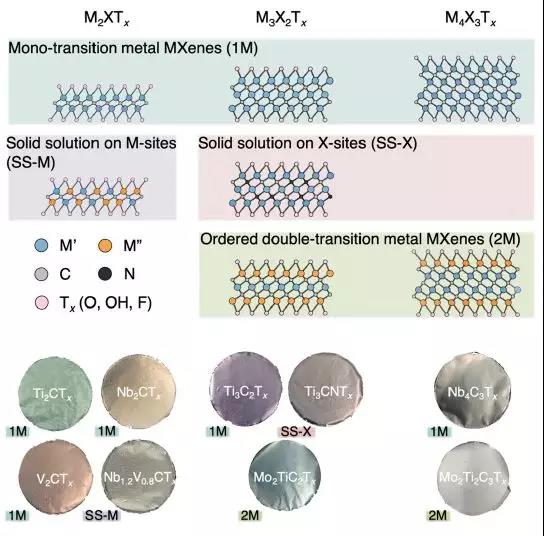Breakthrough in 16 kinds of MXene electromagnetic shielding research
QQ Academic Group: 1092348845
Detailed
With the application of commercial fifth-generation (5G ; 450 MHz-52 GHz) networks and the increase in the number of wireless IoT devices, the requirements for communication stability and security pose a new challenge to electromagnetic interference. Traditional metals (Ag , Cu , Ni, and others ) provide good shielding properties, but it is difficult to deposit metal films on a uniform surface. The shielding effectiveness of metal coatings is limited by the skin effect, and the growth is not obvious. Since 2016 , Ti 3 C 2 T x MXene films have been proven to have excellent electromagnetic interference shielding capabilities at micron-level thicknesses, and their performance is superior to metals and carbon materials ( graphene, carbon nanotubes and carbon fibers ) . MXene aerogels and MXene / polymer composites have made great efforts to optimize the electromagnetic interference shielding performance of MXene . Although more than 30 MXenes of different composition structures have been reported , few studies have investigated Ti 3 C 2 T xElectromagnetic shielding performance other than MXenes .
Achievements
Recently, Drexel University ‘s Yury Gogotsi professor well-known in the international journal ACS NANO published entitled "Beyond Ti 3 C 2 T the X- :MXenes Interference Shielding for Electromagnetic Elements" paper. The first systematic study of 16 Species MXene electromagnetic shielding properties of the material, comprising a single metal MXene , ordered bimetallic MXene , M and X were randomly solid-solution element MXene .The results show that all MXenes films achieve effective electromagnetic interference shielding (> 20 dB) in micrometer thickness . With only 40 nm , the sprayed Ti 3 C 2 T x film has21 dB electromagnetic shielding performance.Adjustable electromagnetic shielding performance was obtained according to different element ratios in the solid solution. And a transmission matrix model is established to perfectly fit the electromagnetic shielding performance of the highly conductive MXenes .

Figure 1 MXenes structure diagram and prepared MXenes film .

Figure 2 Structure and shielding properties of MXenes film .

Figure 3 The effect of thickness on the shielding performance and shielding mechanism of MXenes films .

Figure 4 Comparison of conductivity and shielding performance of MXenesfilms .

Figure 5 Comparison of MXenes film‘s shielding properties with the reported literature .
in conclusion
The MXene sheet was opened by proposing a simple, effective and gentle repeated freeze-thaw method. After 4 cycles, Fat-MXene nanosheets with special folds are larger in size and yield up to 39%. Combined with sonication, although the size was reduced, the yield was further increased to 81.4%. Fat-MXene assembled miniature capacitors have a surface capacitance of up to 23.6 mF cm –2 and a bulk capacitance of 591 mF cm –3 . Excellent electrochemical performance and thus prove the strategy of high quality fat of mesenchymal stem cells. This research opens up a new method to improve the yield of MXene, which is beneficial to further expand the application of MXene.
Original link:
https://doi.org/10.1021/acsnano.0c01312
Source: MXene Academic
- Previous: 3D Network with Classi
- Next: MXene breakthrough: Na


 mxene academic
mxene academic
